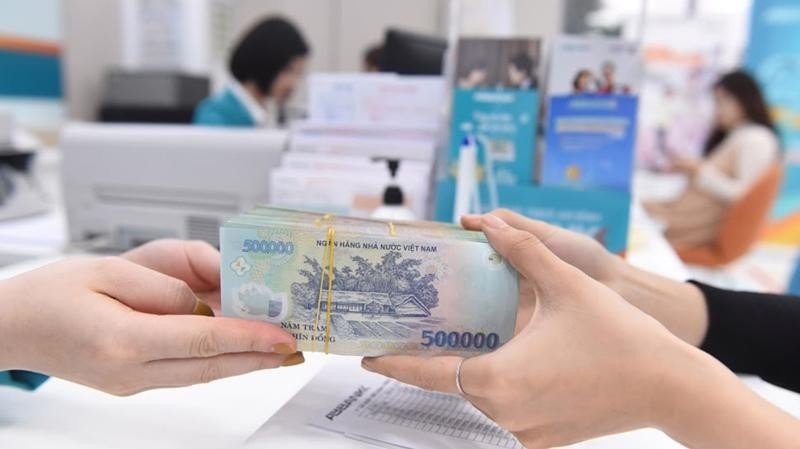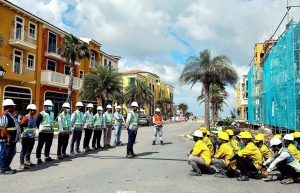Credit continues to flow into real estate sector
Hanoi-headquartered lender Techcombank revealed that at the end of June, its outstanding balances for house purchases stood at $7.57 billion, up 6.3 per cent compared to the outset of this year, and showing a 9.1 per cent jump on-year.
 |
Disbursed capital volume for house purchases at Techcombank saw continued growth in the second quarter (Q2), reaching $1.3 billion.
At SHB, the bank has been offering diverse policies and programmes for real estate buyers since the start of the year.
Customers can borrow at least 90 per cent of the value of the property they intend to buy, with no limit to the loan amount, with interest rates from 5.79 per cent per year only.
With a grace period for the principal reaching 24 months, and a loan duration up to 25 years, customers can pay by instalments for the principal and interest with favourable payment terms, helping to lighten the financial burden.
In addition, SHB supports the diverse needs of customers for the real estate sector, such as housing repairs and construction or furniture purchases.
Of note, customers can be flexible in choosing collaterals such as quasi-money papers, deposit certificates, or assets such as other property and cars.
Figures from the State Bank of Vietnam (SBV) reveal that as of May 31, outstanding credit balance in real estate had inched up 4.61 per cent, equal to $5.5 billion, up $125.8 billion compared to the end of 2023, accounting for 21.5 per cent of the economy's outstanding balance.
Of which, property-oriented credit balance serving real needs made up 60 per cent of total, and that for trading requirements filled up the remaining 40 per cent, rising 10.3 per cent compared to the end of 2023.
Analysts say that the realty market is starting to show signs of a rebound and lending rates still fetching low have contributed to pushing up borrowing demands from developers and accelerating house purchases.
Credit agency VIS Rating said that real estate developers will maintain their leverage ratio at a high level as they increase the use of debt to develop new projects.
In Q1 of 2024, the leverage ratio of listed developers inched up, shown by the debt over earnings before interest, taxes, depreciation, and amortisation (EBITDA) ratio which rose to 3.4-fold compared to less than 2-fold before 2022.
VIS Rating opined that improved access to new capital sources would help real estate firms reduce liquidity difficulties due to large bond maturity pressure in 2024 and 2025.
At the same time, analysts expect that banks’ outstanding balances earmarked for the real estate sector will pick up 16-18 per cent in 2024.
Bank executives stated that even amid headwinds they will continue to lend to the sector once projects have full legal documents.
In addition, lending to this sector is deemed to have great potential, with the market gradually recovering and lending rates remaining at a reasonable level.
Jens Lottner, CEO of Techcombank, said that one of the instrumental reasons for its upbeat business results is their financing of many projects with clear legal status that are ready for sale.
“The demand for real estate is still robust and the second half of the year may be even better,” said Lottner.
Senior financial expert Nguyen Tri Hieu said that urban and industrial real estate have been the two best performing areas from the outset of 2024 and will continue to prosper for the rest of this year.
That is because the current robust growth of foreign direct investment flowing into Vietnam has propelled industrial development. In addition, despite high pricing, there remains huge demand for housing real estate in big cities.
 | Industrial real estate increasingly lucrative More and more businesses are embracing industrial real estate ventures, a segment deemed as having enormous potential for development. |
 | Real estate sector enticing newcomers The newly released prospectus of Ton Dong A JSC ahead of its 2024 AGM on June 28 shows that the steelmaker is mulling over expanding into real estate and agriculture segments. |
 | Real estate developers resume capital flow Restructuring efforts are helping many listed real estate businesses have capital flow to repay debt as well as meeting the demand of investment and business activities. |
What the stars mean:
★ Poor ★ ★ Promising ★★★ Good ★★★★ Very good ★★★★★ Exceptional
Related Contents
Latest News
More News
- Tax sector wraps up 2025 and sets priorities for next year (December 25, 2025 | 14:00)
- A tipping point for digital and hybrid wealth management in Vietnam (December 23, 2025 | 13:33)
- $250 million deal targets women-owned SMEs, sustainable agriculture (December 22, 2025 | 17:40)
- Stock market posts resilient 2025 performance (December 19, 2025 | 18:17)
- Citi Vietnam receives 2025 AmCham CSR recognition (December 19, 2025 | 16:35)
- As global green supply chain reshapes, will Vietnam be left behind? (December 19, 2025 | 08:00)
- Banks gear up for massive capital increases (December 18, 2025 | 17:04)
- Securing capital and efficiency for Vietnam’s 2026-2030 growth ambitions (December 17, 2025 | 10:00)
- Energy sector in need of blended finance mechanisms (December 17, 2025 | 09:00)
- Vietnam still has room to mobilise capital for sustainable growth (December 17, 2025 | 08:57)

 Tag:
Tag:

























 Mobile Version
Mobile Version